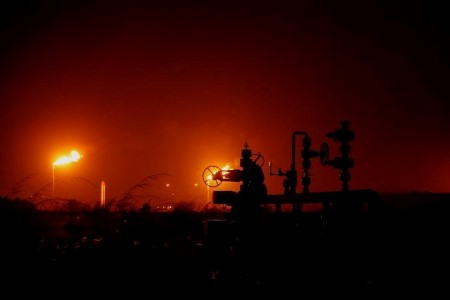




Quarterly Economic Growth Release: More BSP cuts to come
 DOWNLOAD
DOWNLOAD

Monthly Economic Update: Fed catches up
 DOWNLOAD
DOWNLOAD

Inflation Update: Steady and mellow
 DOWNLOAD
DOWNLOAD


Brent oil finishes over USD 80 after this week’s sell-off

HOUSTON, Nov 9 – The Brent crude oil benchmark finished above USD 80 a barrel on Thursday, after demand concerns and a fading war-risk premium triggered a sell-off earlier this week.
Brent crude futures settled at USD 80.01 a barrel, a gain of 47 cents, or 0.59%. US West Texas Intermediate (WTI) crude futures finished at USD 75.74 a barrel up 41 cents or 0.54%.
Late in Thursday’s trading, comments by US Federal Reserve Chairman Jerome Powell indicating possible future interest rate increases shook stock and crude oil markets’ hopes for strong demand.
“There’s a macroeconomic headwind affecting markets today,” said John Kilduff, partner with Again Capital LLC.
Market fundamentals dominated trader sentiments through much of Thursday as fears of Middle East supply disruptions have eased, said Jim Burkhard, vice president and head of research for oil markets at S&P Global Commodity Insights.
“The onset of the Israel-Hamas war does fuel volatility and bring additional risks, but it has not affected underlying oil market fundamentals,” Burkhard said. “Oil prices have remained below where they were in late September – a week before the Hamas attack. Strong oil market fundamentals are prevailing over any fears at the moment.”
Brent is nearly USD 20 a barrel lower than its September peak.
Data from China on Thursday showed policymakers struggling to control disinflation, casting doubt over the chances of a broad-based economic recovery in the world’s biggest commodity consumer.
Earlier in the week customs data showed that China’s total exports of goods and services contracted faster than expected.
Demand indicators also imply weakness in the United States.
US crude oil inventories increased by 11.9 million barrels over the week to Nov. 3, sources said, citing American Petroleum Institute figures.
If confirmed, this would represent the biggest weekly build since February. The US Energy Information Administration (EIA), however, has delayed the release of weekly oil inventory data until Nov. 15 for a system upgrade.
Global markets, however, were upbeat on Thursday on the belief that major central banks have completed their rate hikes. High interest rates raise the cost of borrowing, dampening demand in markets, including oil.
Both OPEC and the International Energy Agency (IEA) are due to offer their view on the state of oil demand and supply fundamentals next week.
OPEC is set to meet at the end of the month to discuss output policy for 2024.
(Reporting by Erwin Seba in Houston; Additional reporting by Natalie Grover in London, Andrew Hayley in Beijing, and Jeslyn Lerh in Singapore; Editing by Kirsten Donovan, Barbara Lewis, David Evans, and Diane Craft)
This article originally appeared on reuters.com





 By Reuters
By Reuters